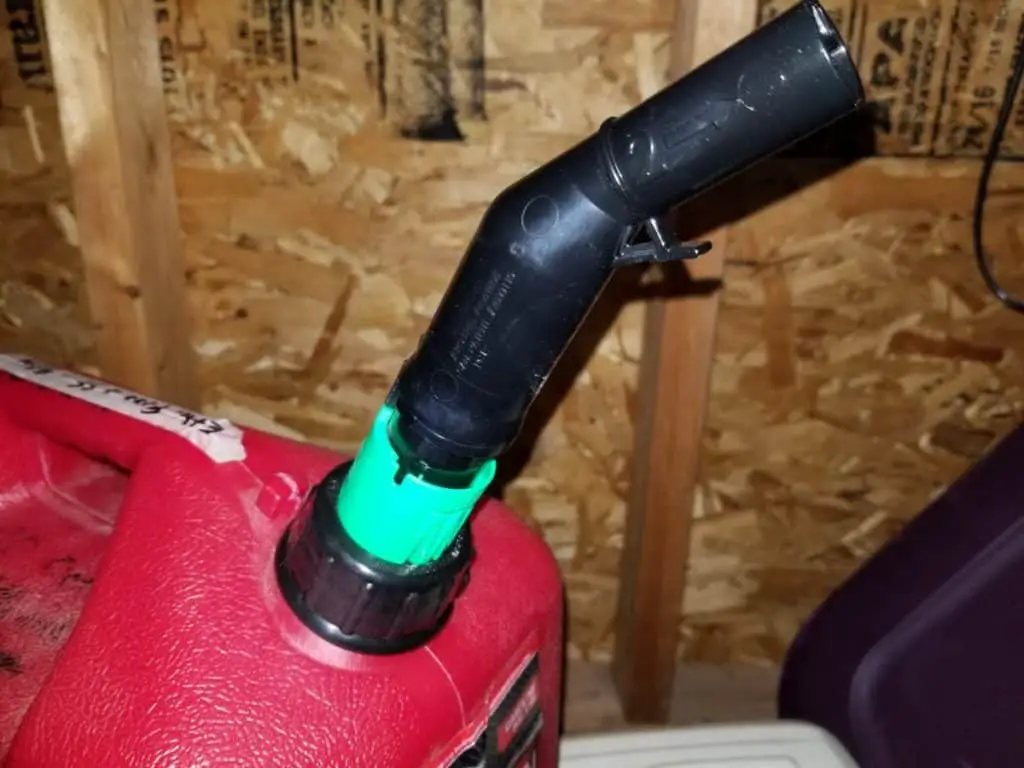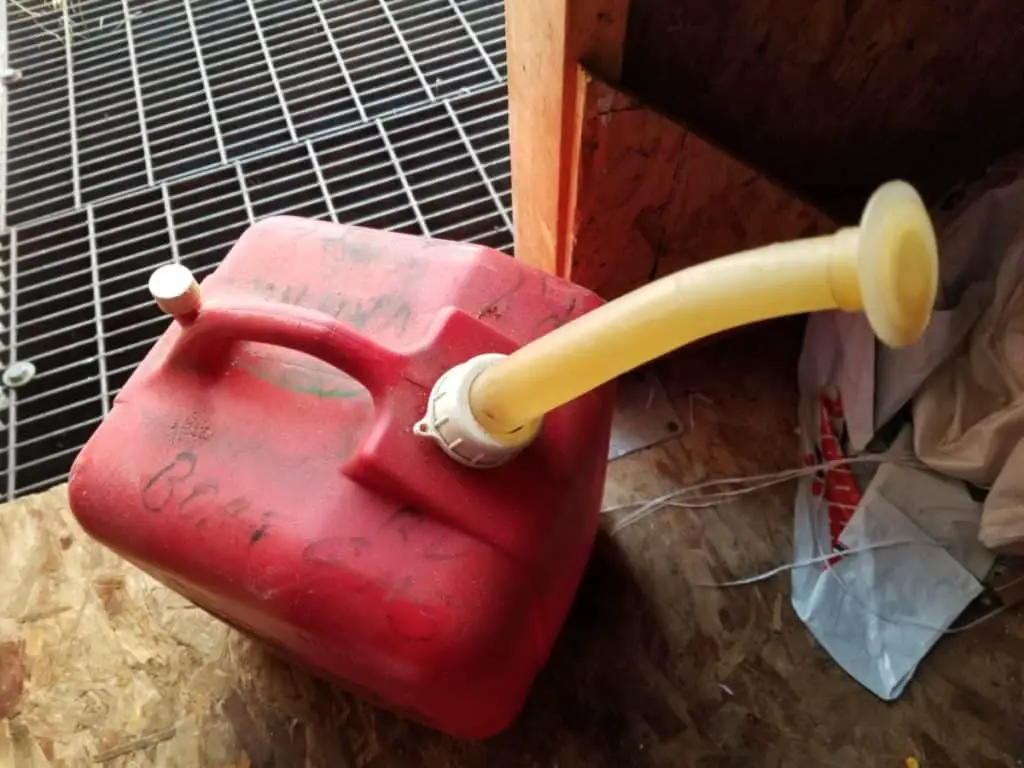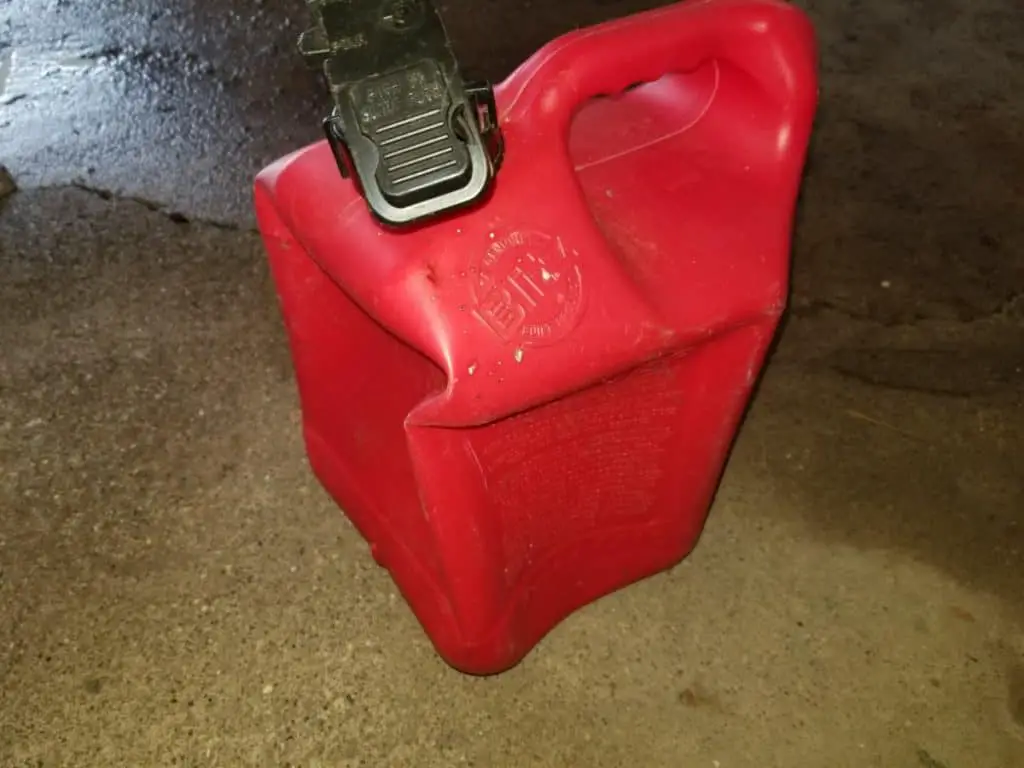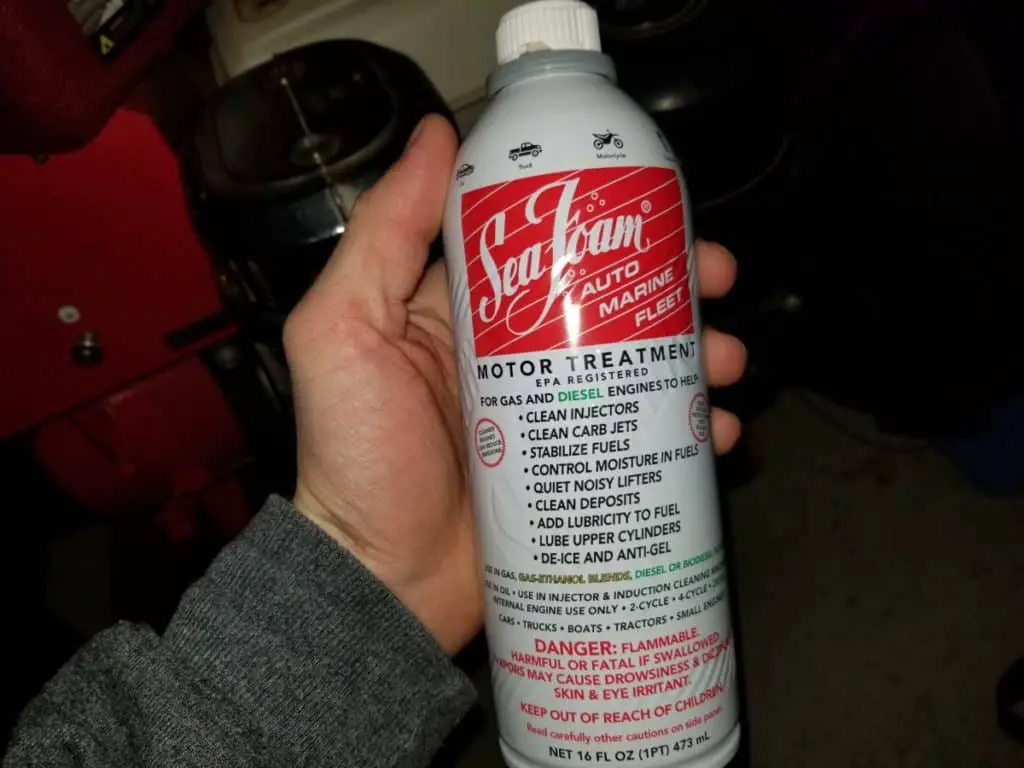Anyone who gets into prepping — be at for a power outage or simply to have gas on hand for a lawn mower — will ask this question at least once when it comes to their gasoline: does gasoline go bad in a plastic container?
If you’re here because of that question then I’m glad you stopped by. There’s definitely a few things you should know about before you simply set that fresh gas in a can and leave it in your garage for months on end.
Yes, untreated gas will certainly start going bad if stored in a vented plastic container in 1 to 3 months and might be entirely unusable after 8 to 12 months as it oxidizes and evaporates. Treating your gas with fuel stabilizer and storing in a self-sealing container will give it a storage-life of about 2 years.
I’m going to cover the differences between the two primary plastic gas containers that you’ll run across, what causes gasoline to go bad, and the best way to store gas in a plastic container.
Your Type of Gas Container Determines the Life of your Gasoline
There are 2 primary types of gas containers that you’ll typically run across if we’re talking about the red plastic kinds. There are self-sealing, and there are vented gas containers.
Self-Sealing Plastic Gas Containers (Post-2009)

If you’re new to prepping or new to storing gas then your more than likely going to have a self-sealing gas container since the vented ones are no longer allowed to be sold in stores since 2009. EPA regulations mandated that all gasoline containers be self sealing and be virtually leak free when it comes to liquids and all vapors of the gasoline.
These containers will have all sorts of different nozzles which are each their own little contraption and make pouring gas into a lawn mower, generator, vehicle, a very tedious undertaking and typically results in lots of spillage.
For all the effort that has been made to prevent accidental spills when being stored and vapors being released into the atmosphere, I’m sure more gasoline has been spilled on concrete and vehicles due to the nozzles that require an extreme combination of balance, coordination, and dexterity by anybody who uses them.
Seriously though, if you haven’t had to use one of them then consider yourself blessed.
Rant over.
One thing that the newer gas cans greatly excel at is their ability to keep gasoline in an optimal state for an extended period of time. This is because they create a perfect seal which prevents gasoline from being exposed to air and the atmosphere.
This ensures that the volatile “light ends” do not evaporate out of your gasoline and that your gasoline is not oxidized by oxygen molecules which are free radicals and will break down all of the additives and chemical components in your gas which contribute to its volatility and combustibility.
Assuming you achieve a proper seal, gasoline stored in these containers can last for at least a year (maybe even two) even if you don’t stabilize the gasoline.
The tricky part is knowing whether not you achieved a proper seal. That’s why I always recommend using a fuel stabilizer as a redundancy even though you are storing the gas in a perfectly sealed container. If the gasket is just off a little bit, you might have the nozzle screwed on as tight as can be but there is an air leak.
Fuel stabilizers will protect you if that happens.
Vented Plastic Gas Containers (Pre-2009)

The older cans before 2009 had a simple spout, gasoline poured freely if you tilted it on a far enough angle, and they had a small vent tab right behind the handle to allow the flow to be very easy and efficient without any gurgling from air bubbles.
These cans, though very easy to use, were by no means sealed even if you put a cap on the end and made sure the vent tab was pushed in. The gasoline in these containers were always exposed to the atmosphere and would lose their volatile components and have them oxidized as well.
Fuel that has been stabilized will last for a year or two if stored in these containers. Untreated fuel (not stabilized) will start to go bad after about 1 month for ethanol free gasoline, and 3 months for regular unleaded.
What Makes Your Gasoline Go Bad?
As we mentioned, above exposure to air is the primary factor that results in gasoline going bad. Oxidizing is the first way in which gas goes bad.
The oxygen molecule is a free radical and at loves to destroy things that it comes in contact with and this includes the integrity of your gasoline and all of its hundreds of additives that have been placed in it for clean and efficient combustion.
Evaporation when exposed to air is also detrimental to your gasoline since the “light ends”, which are the most volatile and combustible components, will evaporate out very quickly when exposed to air. These light ends cannot be replaced when lost.
Water is another element that can hurt your gasoline and this is generally caused by condensation on the inside of the gas tank as the outside air becomes colder than the air in the gas tank.
As soon as temperatures get cold, especially in the freezing range, all of the humidity that was in the air will now condensate onto the inside of the walls of your gas container. The water will run down into the gasoline and will not mix. And this will lead to poor engine performance.
Best way to Store Gasoline in a Plastic Gas Container
- Treat your gasoline with a stabilizing agent
- Store them in a self-sealing plastic container (post-2009 variety)
The best way to store your gasoline is to treat it with a fuel stabilizer before anything else. I prefer SeaFoam, but I have used Stabil without any issues in the past.
I go with SeaFoam now because it integrates into your gasoline instead of creating a slick, or film, on top of the gasoline to prevent oxidizing. The SeaFoam also helps to clean your engine and carburetor of your small engines as well when you run it.
After you treat your gasoline with your choice of stabilizer, it is best to store them in a self-sealing container.
I know, I know. After that rant above, I still prefer them for storage… just not pouring.
If the pouring of the gasoline annoys you from one of these containers you can always buy an aftermarket nozzle or vent kit. I would recommend not installing the vent tabs but definitely getting 1 of the new nozzles for pouring.

Simply keep your nozzle detached from your gas can and have the factory nozzle attached for proper long-term storage. When you are ready to pour, swap the nozzle out for easy pouring one and then replace the original nozzle for storage.
Do I need to Stabilize my Fuel if the Plastic Gas Container is Self-Sealing?
Theoretically, you should be able to simply store untreated gasoline — either ethanol free or regular unleaded — in a self-sealing gasoline container and have no issues for the next year or two.
Stored this way, the gas should not be exposed to the atmosphere which will rob it of its volatile components through evaporation and oxidize them as well.
However, since the best way to store gas is to fill it up to the maximum-fill line on your container to minimize the amount of oxygen inside, you won’t really know if you have a perfect seal or not until your gas container undergoes drastic temperature changes.
And even then, you won’t really see those changes because your gas container is mostly full of liquid and not air.
What I mean is, if your gas container was only 1/3 full with gasoline and 2/3 full with air and it was in a self sealing container and a proper seal was achieved, then as soon as the temperature got cold your gas container would shrink. The walls would cave in as the air inside contracted with the cold.

The opposite would happen if it got really hot. Your gasoline container would look bloated and to the untrained eye you would think that it was about to explode.
If you fill the gasoline to the maximum-fill line, you might have a proper seal but you won’t really be able to truly tell even if the temperatures change since there isn’t enough air inside the container to indicate one way or another through bloating or collapsing.
That’s why I still recommend treating your gasoline with SeaFoam or some other fuel stabilizer before storage – just in case your seal isn’t perfect.

For what it’s worth, and it’s anecdotal, but I stored untreated gasoline in a container with a perfect seal for over a year as an experiment and it still ran great in my lawn mower. Still though, for my generator and car I’m only going to use gas that has been stabilized.
Should You Bleed Off the Pressure from a Bloated Gas Can?
Resist the urge! You’re simply introducing new oxygen into the gas container which will help to further oxidize it and evaporate its light ends which which will decrease its performance in your engine.
The new containers since 2009 are rated to withstand these pressures being placed on the walls of the gas container with increased temperatures and companies that produce gasoline containers are under high scrutiny by the EPA. Failure to adhere to these standards will result in massive fines and losses of permits for production.
If your gasoline container is bloated though, a helpful tip is to make sure that you are pointing your nozzle in a safe direction when you go to poor your gasoline. Better yet, put the nozzle in the gas tank of whatever you’re trying to fill before trying to open the flow by pressing/pulling/twisting or whatever the model container that you have will make you do.
The built-up pressure from a bloated container will cause an ounce or 2 of gasoline to shoot out at a high rate of speed and go about 10′ if you’re not careful. I sprayed the siding of my house last year pretty badly with one lapse of judgement.

